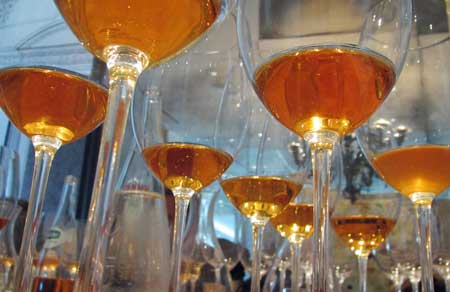
Amphora Wines: “That which we call a rose, by any other name would smell as sweet”
This quotation by William Shakespeare certainly played in my mind last Saturday morning when I joined Austin-based, wine writer David Furer and four of his associates at Phillippe in Houston for a tasting of modern wines made in the Amphora-style of yore. To say that they were different, is an understatement. However, the experience I will chalk up to one that has expanded both my knowledge of wine and my organoleptic horizons.
I will save the details for David to report in Sommelier Journal later this year. He will provide an analysis of our tasting notes and comments along with a statistical analysis of our ratings using a 20-point scoring system.
For those of you that have not had the opportunity to taste amphora wines or even knew that a small group of people are trying to keep the art going these days, I need to say a few words.
An amphora (plural: amphorae or amphoras) is a type of elongated ceramic (crockery) vessel with two handles and a long neck narrower than the body. Amphorae were used in vast numbers to transport and store various products, particularly wine before the days of wooden barrels or the glass bottle and cork closures that we now use. It was the vessel of choice in the ancient Mediterranean region in Greek and early Roman times. Amphorae, the largest of which stand 5 ft high, are again being used to make and age wine. The wines that we tasted were from Italy, Slovenia and Georgia (the country not the state).

The best way to summarize the tasting experience is to say that I needed a throw away 90 percent of my tasting experience and focus on what was presented to me in David’s fifteen wines looking head on and with my eyes (nose and taste buds) wide open. I needed to focus on a whole new set of wine descriptors, starting with the colors presented in the glass: gold-orange, orange-pink, etc. On the nose dried fruits, wet stones, minerals, dust and chalk predominated. For the taste, dry and minerally was the norm.
Watch for David’s article in Sommelier Journal and read some interesting reviews of this very different side of the wine world and his analysis of what was definitely a taste of time past, from the present.
— — — — —
If you want more information on amphora wines and who is making them, click here. My Google search in advance of the tasting taught me one thing: after tasting wine made in amphora, there is good chance that you will have an overriding desire to dance (click here).


Be the first to comment